Results 1,881 to 1,890 of 12091
Thread: Anandtech News
-
05-23-12, 01:30 PM #1881
Anandtech: Supermicro Updates X9 Platform for Intel's Latest Xeon Families
Intel introduced three new Xeon processor families last week. The Xeon E3-1200 v2 family is based on the Ivy Bridge architecture, while the Sandy Bridge based Xeon E5-2400 and E5-4600 families encompass processors for two and four socket systems respectively. Supermicro has duly updated their X9 family of motherboards and systems to support the new processors. Without further digression, let us take a look at their new products.
Ivy Bridge Xeon Platforms
The updates for the Ivy Bridge Xeons has been quite straightforward for Supermicro. In fact, the announcements actually link to boards / systems based on the Sandy Bridge Xeons (E3-1200), along with a BIOS update for PCI-E 3.0 support.
5037MC-H8TRF:
This 3U 8x node 'MicroCloud' system is meant for cloud computing, data center and web hosting applications. Each node can support two hot-swap SATA3 disks and upto 32 GB of ECC memory. It is based on the Intel C204 PCH chipset and has two GbE ports courtesy of the Intel 82580DB. The support for the Xeon E3-1200 v2 family starts from BIOS rev. 2.0 (with support for DDR3-1600 and PCI-E 3.0 connection speeds for the single PCI-E x8 slot).
5017C-LF, 5017C-MF, 5017C-TF:
These 1U rackmount servers are meant for networking and embedded applications. The TF model is based on the C204 PCH chipset (Supermicro's X9SCM-F motherboard), while the other two are based on the C202 (X9SCL-F motherboard). The differences between the units are mainly with respect to the SATA disk support
and the nature of the PCI-E cards which can be added on. While the LF model supports 1x3.5" or optional 2x2.5" internal SATA drive bays and 1x PCI-E 3.0 x8 low profile slot, the MF model supports 2x3.5" internal HDDs and the PCI-E 3.0 slot is full height. The TF model supports full height / full length PCI-E cards in the PCI-E 3.0 slot and also includes support for hot swapping the hard drives in the two internal bays.
5017C-MTF, 5017C-MTRF, 1017C-TF:
These 1U rackmount mainstream server systems are meant for gateway / security / DVR / transcoding and broadcast applications. All of them are based on Supermicro's X9SCL-F motherboard with the C602 PCH chipset. The TF model has RAID support for the 4x2.5" hot-swap SATA2 HDDs, while the other two models support 4x3.5" hot-swap drives without RAID. All three models have full height PCI-E slots (PCI-E 3.0 x8), but
only the TF model can support full-length cards. All models have support for up to 32 GB of ECC memory, two GbE LAN ports and 6x SATA 2.0 ports with RAID 0,1,5,10 support. The MTF model comes with a 350W power supply while the TF model has a 330W one. The MTRF has a redundant power supply with a rating of 400W.
5037C-i, 5037C-T:
These are server towers for small/medium business applications, file/storage serving and remote desktop applications. While the i model is based on Supermicro's X9SCL motherboard, the T model is based on the X9SCA. Both of them support upto 32 GB of ECC DRAM (upto DDR3-1600). The T model comes with a 500W power supply, support for 4x3.5" internal SATA HDDs and an optional 4x2.5" rotatable HDD cage. There are 2 GbE ports. The PCI breakdown is as follow: 1 PCI-E 3.0 x16, 2 PCI-E 2.0 x4 in x8 and 3 PCI 32-bit expansion slots. The i model has a 300W power supply, with support for 2x5.25" external drive bays, 4x3.5" internal drive bays and 1x3.5" external drive bay (with the hard drive cage capable of rotation for easy access). There are 2 GbE ports, just like the T model. The PCI break down is as follows: 2 PCI-E 3.0 x8 and 1 PCI-E 2.0 x4 in x8 slot.
The motherboards of all the above systems are also available stand-alone for system integrators and resellers to build their own custom machines.
Sandy Bridge-EN and Sandy Bridge-EP Xeon Platforms
Supermicro also updated their X9 lineup to include boards for the Xeon E5-2400 (Sandy Bridge-EP) and Xeon E5-4600 (Sandy Bridge-EN) dual and quad processor families.
The X9 Dual-Processor (DP) solutions cater to date centers, web servers, search engine appliances, gaming systems and ATMs. The 4-way Multi-Processor (MP) platforms target high-end enterprise IT and high performance computing (HPC) applications.
The DP solutions include systems based on the following motherboards:
X9DBU-3/iF: The 3F model is based on the C606 chipset, while the iF model is based on the C602. While the 3F model supports 4xSATA2, 2xSATA3 and 8xSAS, the iF model supports 8xSATA2 and 2xSATA3 only. Both of the boards support upto 384 GB of ECC memory. PCI-E support includes 1x v3.0 x24 and 1x v3.0 x8. The form factor is proprietary. Supermicro has one 2U rackmount system (6027B-URF) based on the 3F model. The 1U systems include 1027B-URF, 6017B-URF and 6017B-NTF.
X9DAL-3/i: These motherboards support upto 192 GB of ECC memory. The 3 model is based on the C606 chipset, and the i model is based on the C602. Both of them support one PCI 32, one PCI-E 3.0 x16, 1 PCI-E 3.0 x4 (in x8) and one PCI-E 3.0 x8 (in x16) and two PCI-E 3.0 x8. The SATA/SAS configuration difference stems from the differences between the C606 and C602 chipset and are the same as that of the X9DBU model. The i model is at the heart of the 7037A-iL mid-tower workstation.
X9DBL-3/i(F): The 3 models are based on the C606 chipset, while the i models are based on the C602. As usual, the C606 brings along with it support for 8x SAS/SATA ports. The i models also have integrated IPMI 2.0 and KVM along with a dedicated LAN. All of the models support upto 192 GB of ECC memory, and the expansion slots include one PCI, three PCI-E 3.0 x8, one PCI-E 3.0 x16 and one PCI-E 3.0 x4 (in x8). These motherboards have been put in a range of 1U rackmount servers including the 6017B-MTF, 6017B-MTLF, 6017B-MTRF and 1027B-MTF.
The 4-way MP solutions include systems based on the following motherboards:
X9QR7/i-(T)F+: Systems based on these motherboards include the 1U 8017R-TF+ and 7FT+, the 2U 8027R-TRF+ and 7RFT+ and the 4U 8047R-TRF+ and 7RFT+. These are based on the C602 chipset and can support upto 32 DIMMs for 1 TB of ECC memory. There are four PCI-E 3.0 x16 (out of which two operate in x8 mode) slots. All models have dual GbE LAN, but the T SKU has dual 10 GbE capability. There are 8 SAS2 ports courtesy of the LSI 2208 in the "7" SKU in this 16.79" x 16.4" board.
X9QR7/i-(J)(T)F: Systems based on these motherboards include the 4U 8047R-7JRFT and the 4U 4047R-7JRFT. Compared to the "+" motherboards detailed above, these support only 24 DIMMs for a total of 768 GB of ECC memory. There are 8 PCI-E 3.0 x16 (one of them operates in x8 mode) slots, and dual 10 GbE capability comes as a standard. LSI 2308 provides 16 SAS2 ports for this 17" x 17" board.
More...
-
05-23-12, 02:00 PM #1882
Anandtech: Seagate Announces Intent to Acquire LaCie
We just received word from LaCie PR that Seagate has announced an intent to acquire a controlling interest in LaCie. Seagate is a familiar name for storage products, with hard drives being a primary focus and a history that goes back over three decades. More recently, they have branched out into other related areas with their GoFlex external drives and media players. LaCie on the other hand has been around for 20 years, and they have their fingers in a variety of pies: I first came to know them as a purveyor of high-end displays, but more recently they’ve been heavily involved in the storage market, with some of the first Thunderbolt external drive enclosures like their Little Big Disk and 2Big Thunderbolt.
While Seagate now offers a single drive GoFlex Thunderbolt adapter, it would appear that they’re most interested in acquiring LaCie for their multi-drive enclosures. The press release notes that the two companies have “two highly complementary product and technology portfolios”, with specific mention of LaCie’s premium storage solutions, NAS products, and other software. Besides the technology portfolio, the purchase is also intended to help accelerate Seagate’s growth in the expanding consumer storage market, particularly in Europe and Japan. It’s not just about products and technologies, of course, as mention is made of “relationships with several key retailers”. Mr. Spruch will also join Seagate following the close of the sale and lead the company’s consumer storage products organization.
Seagate has offered to purchase all of the shares from LaCie’s chairman and CEO Philippe Spruch and his affiliate, which would represent a controlling interest with 64.5% of outstanding LaCie shares. Pending government approval, at the close of this transaction Seagate would commence an all-cash simplified tender offer to acquire the remaining outstanding shares, in accordance with the General Regulation of the French Autorité des Marchés Financiers (AMF). Seagate has offered Mr. Spruch €4.05 per share in cash, minus a potential adjustment depending on the cash and debt position of LaCie at closing. This price may also be increased by a possible 3%, resulting in a maximum potential price per LaCie share of €4.17. The offer currently values LaCie at an approximate €146 million/$186 million USD, including acquired net cash of approximately €49/$65 million USD, as of March 31, 2012. The €4.05 per share price represents a premium of 29% to LaCie's average closing stock price over the 30 trading days ended May 22, 2012.
The transaction is expected to be neutral to Seagate's fiscal 2013 earnings per share, and the tender offer is expected to be completed by Q3’2012. The transaction is subject to regulatory approval in the United States, France, and Germany, as well as potential other jurisdictions.
More...
-
05-24-12, 06:30 AM #1883
Anandtech: Streacom Updates Passive HTPC Chassis Lineup with FC9 and FC10
The advent of CPUs with low TDPs (but having enough power to handle HTPC duties) has resulted in passive HTPCs becoming more and more popular. Streacom (started in 2010) designs and manufactures a range of products including active and passive cooled chassis for HTPC and general usage, home theater amplifiers, servers, HTPC accessories and embedded entertainment solutions. In addition, they also offer OEM/ODM services. In fact, Aleutia uses products from Streacom in some of their lineups.
Streacom's current HTPC chassis lineup includes the following models:
- FC5 WS Fanless Chassis (June 2011)
- F1C Chassis (June 2011)
- FC8 Fanless Chassis (July 2011)
- F7C Chassis (August 2011)
- FC5 OD Fanless Chassis (September 2011)
The passive nature of most of the above models (coupled with the targeting of the HTPC market) resulted in the fact that ATX-sized motherboards couldn't be supported. Last week, Streacom announced two passive chassis models, the FC9 and FC10. Both the models are fully aluminium and available in silver or black color. Streacom's website also lists a set of compatible Streacom-branded power supplies (Nano160, Nano200, Nano200XT and StreaFlex 250), details of which are yet to be fully made public. Streacom has internally tested processors with TDP of up to 120W, but strongly suggests that end users limit themselves to 95W TDP processors for builds involving the FC9 and FC10.
FC9 Fanless Chassis
FC10 Fanless ChassisStreacom FC9 Passive Chassis Specifications Motherboard Form Factors Mini-ITX and Micro-ATX Drive Bays Optical 1x 5.25" (slim-line, slot-loading optical drive required) Internal 2x 3.5", 1x 2.5" Cooling Fully Passive Heat Pipe Direct Touch Solution Expansion Slots 3x Low Profile I/O Ports Motherboard Dependent Weight 4.9 kg Dimensions 348 x 289 x 100mm (W x D x H) Price MSRP $279 / 249 Euros
Readers can look forward to more coverage of passive HTPC hardware components. Feel free to comment about what other components you would use for a fully passive HTPC build.Streacom FC10 Passive Chassis Specifications Motherboard Form Factors Mini-ITX, Micro-ATX and Full ATX Drive Bays Optical 1x 5.25" (slim-line, slot-loading optical drive required) Internal 2x 3.5", 3x 2.5" Cooling Fully Passive Heat Pipe Direct Touch Solution Expansion Slots 2 x Full Height Expansion Slots (riser card required) I/O Ports Motherboard Dependent / 2 x USB 3.0 on the side Weight 5.4 kg Dimensions 435 x 319 x 100mm (W x D x H) Price MSRP $349 / 299 Euros
More...
-
05-24-12, 08:30 AM #1884
Anandtech: Nvidia Icera 410 LTE Modem Passes AT&T Network Validation
Since acquiring Icera, Nvidia has been busy readying itself for the next level of integration - selling baseband in addition to APs (Application Processors), and further down the road, inclusion of the baseband onboard the SoC. Today's news is a small step and logical precursor toward both goals, Nvidia's Icera 410 LTE and HSPA+ baseband has passed AT&T's network validation testing (NVT) which means the baseband is now approved to ship in subsidized tablets and clamshells, but not phones yet. The approval validates both the ICE8061 baseband and ICE8261 transceiver which comprise the Icera 410 chipset. Before the Nvidia acquisition, the Icera 410 chipset was named the Espresso 410 10 MHz platform.
Icera 410 is a multimode LTE / DC-HSPA+ / GSM baseband capable of essentially all the features you'd expect for this generation, including 64QAM on HSPA+, the option for DC-HSPA+ (dual cell), and interference cancelation (Type 3i). The only downside is that Icera 410 is an LTE UE Category 2 part, which means it can do 50 Mbps maximum on the downlink on 10 MHz FDD-LTE, compared to UE Category 3's 73 Mbps maximum for 10 MHz FDD-LTE. That said, the success of other UE Category 2 devices (like Motorola's Wrigley in all Motorola 4G LTE phones) shows that this isn't a huge deal breaker. As a reminder, AT&T is running both 5 and 10 MHz FDD-LTE depending on the market.
It doesn't take a lot of imagination to make the next logical leap, which is what role the Icera 410 IP blocks will play in Nvidia's upcoming codename "Grey" SoC, which includes an as yet unannounced Icera baseband.
More...
-
05-24-12, 01:00 PM #1885
Anandtech: Replacing my HTPC with a mini ITX System
Free time is hard to come by these days. Since the beginning of the year I've hit Vegas, Barcelona, Santa Clara, New York, Santa Clara (again), Austin, Seattle, Chicago, Santa Clara (again) and Folsom. Before the end of June I'll add Taipei, San Francisco and Seattle again to the list. My travel schedule as of late has taken its toll on a number of things, one of which has been my ability to spend much time in the theater I built a while ago, inspired by this old AVS forum thread.
I've needed to rebuild the HTPC in there for a while. Truth be told, my most reliable HTPC was an old AMD 780G platform (Gigabyte's GA-78GM-S2H) but it lacked the HD audio bitstreaming capabilities that I was looking for. Since then I've tried adding sound cards with bitstream audio support, played with ION, experimented with Boxee, and finally moved to a Clarkdale based HTPC. All of these solutions had their quirks and for whatever reason none was quite as stable and appliance-like as the original 780G. That's usually how things go however. If it ain't broke, don't fix it right?
Times have changed however. The trend towards remote mass storage and smaller form factors applies just as well to HTPCs. Four years ago when I started thinking about the HTPC and theater I wanted a chassis that could accommodate a bunch of 1TB drives for holding all of my content. As a result, the HTPC chassis had to be much bigger than necessary. Improvements on the SoC front meant that I could almost drive the whole theater off of something Atom based, although Intel dropping the ball on serious Atom GPUs and pushing NVIDIA out of the market meant that solution wasn't going to work.
Whenever I finish a big review, especially one that I put together under an incredible time crunch, I like to take a little bit of time to do something fun. Whether it's going out for a drive or actually play one of the many games I'm constantly testing, it's a necessary part of the post-review process. It keeps me sane. After the Zenbook Prime review posted, I had a little bit of time while running data for the follow-up. I also had a stack of hardware I'd been assembling to tackle the sad state of my unstable and presently unracked HTPC. Partially out of a desire to clean the lab up a bit, I started piecing together what I hope will be the spiritual successor to my old 780G HTPC.
I've got a Promise Pegasus R6 with far too much storage driving much of my lab: benchmarks, test data, OS images, you name it. I also have a decent amount of leftover space for HT content so that became my makeshift NAS. It also meant that I didn't need room for any real storage in the HTPC, which further meant that I could go mini-ITX. Originally I expected my HTPC to remain a fixture in the theater but it turned out that I was constantly swapping components in and out as companies sent along HTPC-worthy gear that needed testing. Going mini-ITX and abandoning the idea of something large and rackmounted will make that part of my life a lot easier.
The build started with Intel's DH77DF mini-ITX board. It supports Ivy Bridge but for the time being I'm just using Intel's Pentium G850:
The Pentium G850 is a dual-core Sandy Bridge (32nm) based design with Intel's HD processor graphics (basically an HD 2000 without Quick Sync, BD 3D, Intel Insider and Clear Video HD). I underclocked the CPU to 1.6GHz from its stock 2.9GHz frequency as the decode block is doing much of the heavy lifting here. The stock retail heatsink/fan is capable and quiet enough given that the HTPC ends up tucked away in a corner of the room with audio easily drowning out any noise it would make.
The motherboard happens to have a mini-PCIe/mSATA slot on it, giving my old Intel SSD 310 mSATA drive a purpose in life. Small SSDs make for great HTPC boot drives (silent, cool running, low chance of failure right before you want to watch a movie). The mSATA interface also removes the need for running SATA and power cables, a welcome benefit when building a cramped mini-ITX system.
For memory I needed something low profile, so I ironically turned to a bundle of AMD memory I've been wanting to do something with:
If you didn't get the memo, AMD sort of officially entered the desktop memory market recently. It's a partnership between AMD and Patriot Memory at this point, where AMD selects the components and Patriot validates, distributes and supports the AMD branded DIMMs. There's only a single DRAM vendor approved today although I hear they are trying to expand the program. From AMD's perspective it's a quick way to increase top line revenues, although the memory business isn't extremely profitable. The memory works well and more importantly it's a lot more low profile than most of the high-end DIMMs I have laying around the lab, which works for my needs.
Picking the right mini-ITX chassis was a struggle as I don't believe that there many (any?) good looking mini-ITX HTPC cases on the market today. I've been pushing Antec for years but it turns out that despite the coolness of mini-ITX, motherboards and cases built around the spec just don't sell well. I really do hope this eventually changes as companies like ASUS have been taking the form factor seriously for a while now.
I ended up with Antec's ISK110, an admittedly non-HTPC-looking chassis but one that definitely gets the job done. Assembly was pretty simple once I realized that I had to unscrew and pull the front panel out a bit in order to get the motherboard installed.
The ISK110 uses an external 90W power supply. With my underclocked Pentium G850 the entire system pulls around 23W while watching a movie and peaks at 33W when installing software/doing other more CPU intensive things. Power consumption is a bit higher than I'd like but unfortunately the Intel board doesn't allow user customizable core voltages, so I'm not able to exploit the awesome benefits of voltage scaling.
The box is running Windows 7 and XBMC, while I'll rely on the PS3 for any BDs I haven't had time to rip. I haven't yet watched a full movie on it yet but it worked well in all of my tests thus far. I'm particularly excited about the portability aspect of the machine, especially since I end up moving it around a lot more than I expected to.
Gallery: Replacing my HTPC with a mini ITX System





More...
-
05-24-12, 02:30 PM #1886
Anandtech: Gigabyte GA-Z77MX-D3H Review – Z77 and MicroATX
In the first of our non-full-size Z77 motherboard reviews, we are today getting to grips with the Gigabyte GA-Z77MX-D3H. Currently retailing at $135, the Z77MX-D3H offers more performance in the microATX factor than some motherboards do in full-fat ATX mode. This motherboard took high-powered memory in its stride, and on the latest F10 BIOS (at time of testing) Gigabyte claim full compatibility with Xeon E3-12xx processors. The Z77MX-D3H represents a great crack at a smaller form factor combined with a dual GPU gaming machine. Read on for the full review.
More...
-
05-24-12, 04:00 PM #1887
Anandtech: Nvidia Announces Icera 500 - The Baseband in Grey
During Nvidia's Tegra analyst day, more details were disclosed about both Nvidia's plans for Icera, and the upcoming codename Grey SoC with Icera inside. Earlier today we talked about how Icera 410 had been validated for use on AT&T's LTE and HSPA network, which itself is an exciting step towards a complete Nvidia solution. Nvidia just announced their upcoming Icera baseband, Icera 500, which is an LTE UE Category 3 device (building on 410 which is UE Category 2) and includes HSPA+ and other features from Icera 450. Because Icera's architecture is a software defined radio, it was hinted we might even see beyond UE Category 3 in the future.
We'll have to wait and see for further details about what other capabilities Icera 500 brings.“NVIDIA’s second-generation LTE modem – the Icera 500 chipset - addresses high end smartphones as well as tablets and clamshell devices, and provides worldwide LTE support. We expect to see the Icera 500 modem in devices in 2013.”Nvidia expects Icera 500 to appear in devices by the end of this year, and Grey will appear with Icera 500 directly integrated later in 2013. This will enable Tegra to drive into lower cost platforms and smaller form factors in a way that only a few other SoC players can.
Nvidia is rapidly putting all the pieces together for delivering a complete solution with both their own SoC and baseband. Grey will definitely be a part to keep a watchful eye for.
More...
-
05-24-12, 11:30 PM #1888
Anandtech: MSI GT70 Ivy Bridge Gaming Notebook Giveaway
Congrats to lebarle who won the MSI Z77A-GD65 from our last giveaway. As I hinted at last time however, if you didn't win or aren't in need of a new motherboard, MSI had something special planned for us: a quad-core Ivy Bridge notebook to give away.
It's the MSI GT70, a 17.3-inch 1080p gaming notebook with a Core i7-3610QM CPU (quad-core Ivy Bridge, 2.3GHz base clock, 3.3GHz max turbo). The system comes with an insane amount of memory - 12GB of DDR3-1600. There's a 750GB 7200RPM internal hard drive with more than enough space for all of your games. As a gaming notebook, it's no surprise that MSI outfitted the GT70 with a GeForce GTX 670M (40nm GF110 based design) and 3GB of GDDR5. By all accounts this should be one powerful gaming notebook.
Read on for entry details!
More...
-
05-26-12, 03:30 AM #1889
Anandtech: Laptop Graphics Face Off: Diablo III Performance
Blizzard’s latest iteration of their hack ‘n slash Diablo series is making plenty of news, and we managed to get a copy for testing purposes. If you haven’t read much about Diablo III, the short skinny is that it’s not particularly demanding when it comes to desktop hardware. Laptops on the other hand, that’s a different matter. We’ve had some requests to show how the various IGPs and mainstream mobile GPUs handle the game, and with hardware and software in hand we’ve run some tests to provide answers. Just how much GPU do you need to take on the forces of hell while untethered? Read on to find out.
More...
-
05-28-12, 07:01 AM #1890
Anandtech: LaCie's 2big NAS Review
The SMB (Small to Medium Businesses) / SOHO (Small Office / Home Office) NAS market is a highly competitive one. We have been reviewing a number of ARM-based 2-bay / 4-bay NAS units over the last year or so. In addition, we have also looked at some x86-based high-end systems such as the LaCie 5Big Storage Server and the QNAP TS-659 Pro II.
On May 15th, LaCie launched an updated version of their 2big Network 2 2-bay product, the 2big NAS. The 2big NAS comes in diskless and 6TB versions, priced at $299.99 and $649.00 respectively. At this price point, the NAS competes with advanced 2-bay SMB solutions such as the Synology DS211+, and not the LG NAS N2A2 (which is geared primarily towards home users). Do the features and performance match up to the price point? Read on for our analysis and detailed review.
More...
Thread Information
Users Browsing this Thread
There are currently 30 users browsing this thread. (0 members and 30 guests)




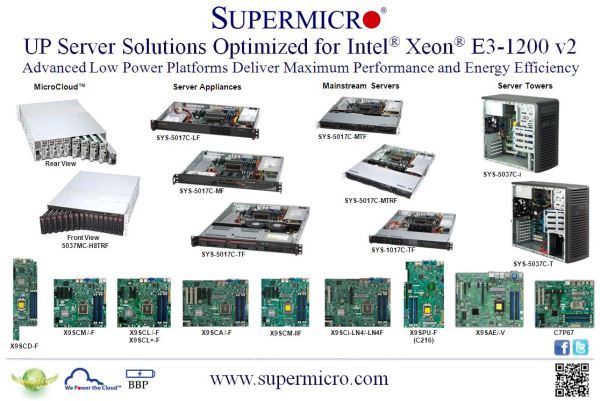
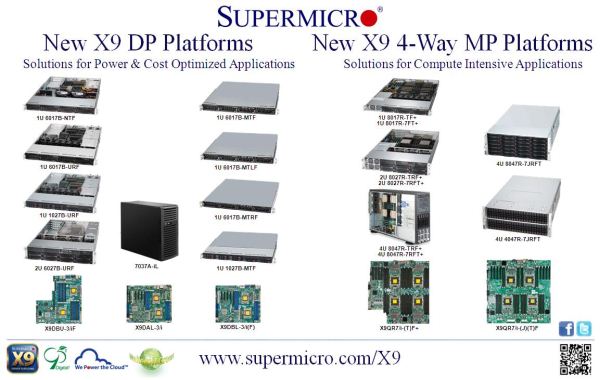

 Quote
Quote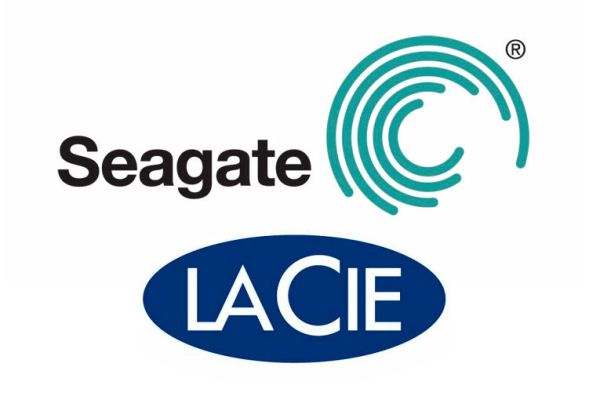















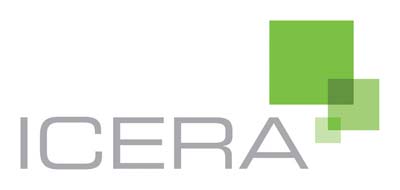









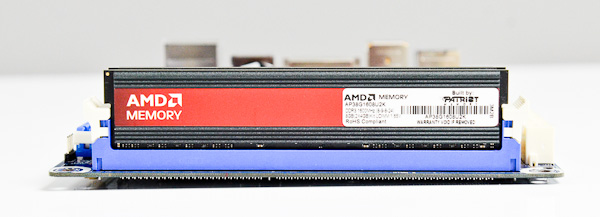
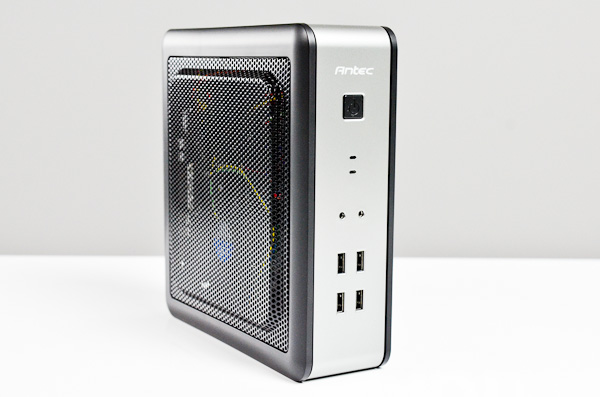
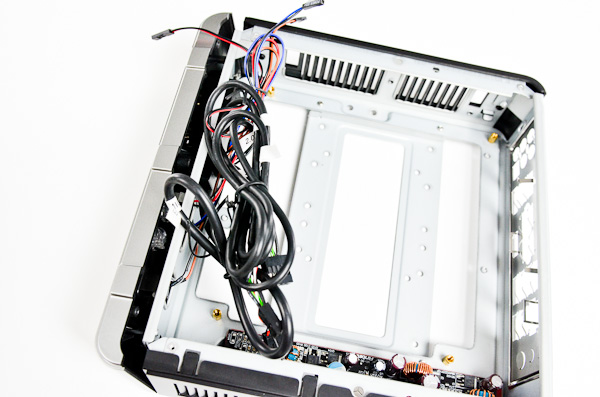
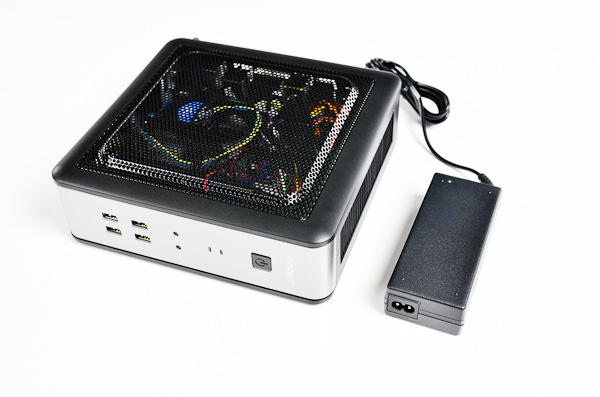
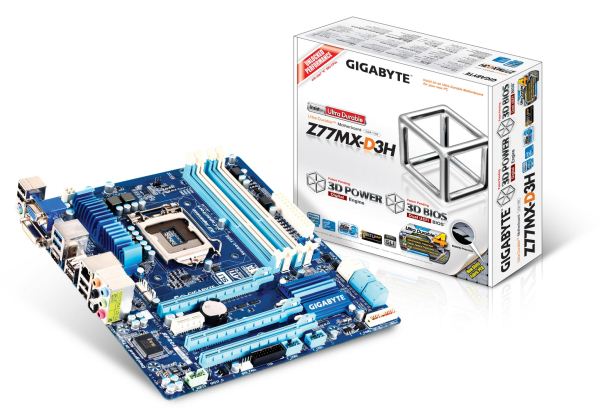



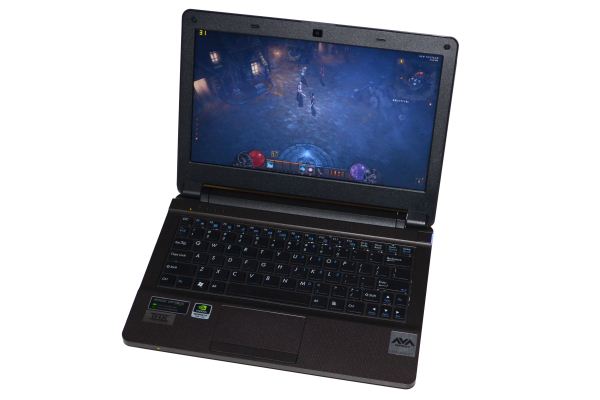
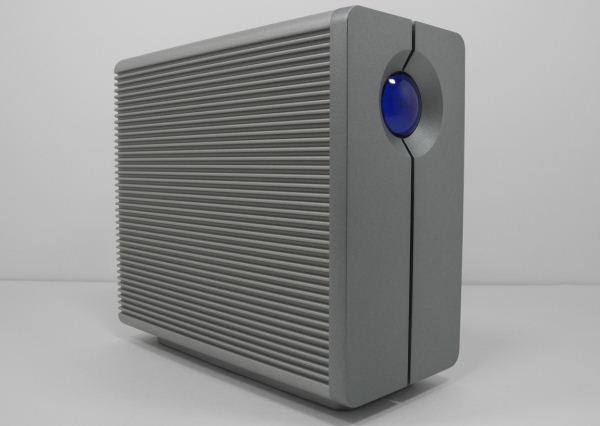
















Bookmarks